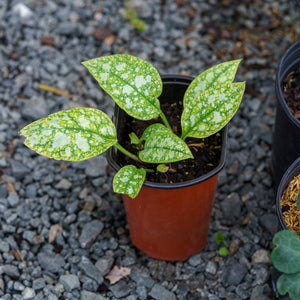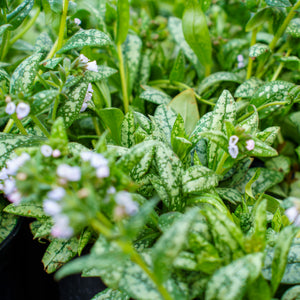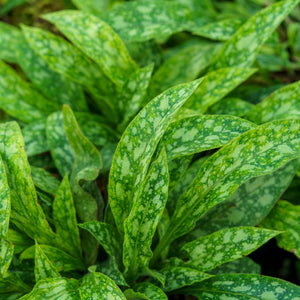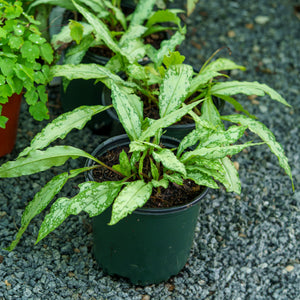The Pulmonaria Guide
Pulmonaria, commonly known as Lungwort, is a shade-loving perennial prized for its early spring blooms and strikingly patterned foliage. Its clusters of tubular flowers appear in shades of pink, blue, purple, and white—often changing color as they mature—while the foliage offers long-lasting interest with silver spots or fully silvered leaves. Pulmonaria is an essential addition to woodland gardens, shaded borders, and pollinator plantings.
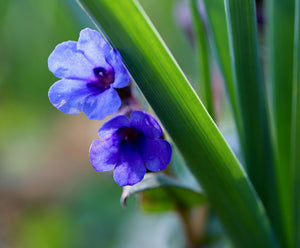
About
Pulmonaria belongs to the borage family (Boraginaceae) and is native to Europe and western Asia. It’s among the first perennials to bloom in spring, often producing clusters of tubular flowers in pink, blue, purple, or white. Interestingly, flowers can change color as they age, giving the plant a two-toned appearance.
Pulmonaria longifolia 'E.B. Anderson' is noted for its narrow, silver-spotted foliage and bright blue blooms. 'Trevi Fountain' has deep green leaves with heavy silver spotting and cobalt-blue flowers, while 'Raspberry Splash' features a pink-purple bloom combo and vivid variegation. Newer introductions like 'Spot On' and 'Twinkle Toes' offer improved mildew resistance and compact forms for modern gardens.
These plants form clumps and slowly spread, eventually forming dense groundcover if allowed to naturalize. They're ideal for woodland settings, underplantings, and the shaded edge of garden beds.
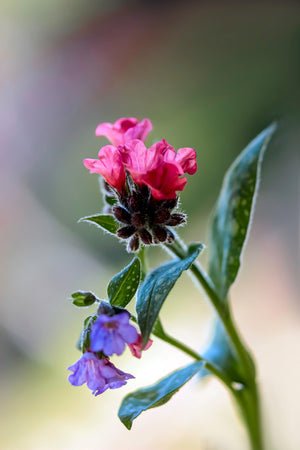
PLANTING
Pulmonaria is easy to grow when planted in the right environment. Here’s how to ensure long-term success:
- USDA Hardiness Zones: Typically hardy in Zones 3–8.
- Soil: Moist, humus-rich, and well-drained. Avoid dry or overly sandy soil.
- Sunlight: Prefers part shade to full shade. Can tolerate morning sun if soil stays moist.
- Spacing: Space plants 12–18 inches apart to allow for slow spreading and airflow.
- Planting Time: Best planted in early spring or fall.
To plant, dig a hole the same depth as the root ball and slightly wider. Set the plant in place, backfill with enriched soil, and water thoroughly. Mulching helps conserve moisture and suppress weeds.
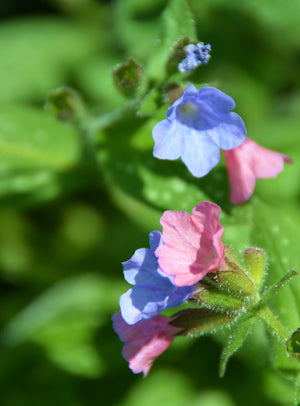
CARE
Pulmonaria requires minimal maintenance once established:
- Watering: Keep soil consistently moist, especially during the growing season. Do not let soil dry out completely.
- Fertilizing: Apply a light layer of compost or a balanced slow-release fertilizer in early spring.
- Deadheading: Remove spent blooms to improve appearance but isn’t strictly necessary.
- Pruning: Cut back foliage in midsummer if it becomes ragged or after flowering to encourage fresh growth.
- Division: Divide clumps every 3–5 years in early spring or fall to rejuvenate plants and prevent overcrowding.
Pulmonaria is relatively pest-free but may suffer from powdery mildew in overly humid or crowded conditions. Improve air circulation and remove infected foliage as needed.
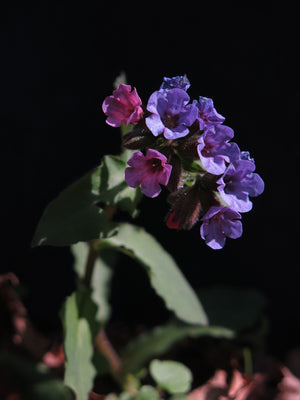
HOW TO USE
Pulmonaria brings color and texture to shady gardens and combines well with other shade-loving plants:
- Woodland Gardens: Ideal for planting under trees or among native woodland plants.
- Borders & Edging: Use varieties like 'Pretty in Pink' or 'Silver Bouquet' to line shady paths and walkways.
- Groundcover: Slowly spreading clumps make an effective and ornamental groundcover.
- Mixed Beds: Pair with hostas, ferns, heucheras, brunnera, and astilbes for a layered shade planting.
- Early Pollinator Beds: Pulmonaria is an important nectar source for bees emerging in early spring.
Compact, clumping forms also work well in shaded containers where moisture can be monitored.
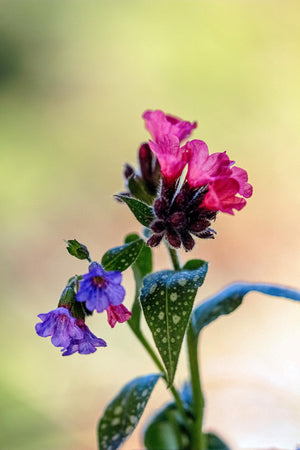
Common Questions
- Is lungwort poisonous to dogs? Pulmonaria is not known to be toxic to dogs.
- Is lungwort poisonous to cats? No, it is not considered toxic to cats.
- Is lungwort invasive? Pulmonaria is not invasive but may slowly naturalize in suitable environments.
- Does lungwort spread? Yes, it spreads by clumping and short rhizomes, but not aggressively.
- Do deer eat lungwort? Deer typically avoid lungwort due to its fuzzy leaves.
- Do rabbits eat lungwort? It is generally rabbit-resistant.
- Do you cut back lungwort in the fall? Yes, cut back foliage in fall to tidy the plant and prepare for winter.
- Does lungwort bloom all summer? No, it blooms mainly in early to mid-spring. Some varieties may have a light rebloom.
- When does lungwort bloom? Most varieties bloom in early to mid-spring, often among the first perennials to flower.
- How big does lungwort get? Most grow 8–14 inches tall and 12–18 inches wide, depending on variety.
Conclusion
Pulmonaria adds early-season interest and beautiful foliage to shaded gardens, making it an essential component in woodland designs and naturalistic plantings. With deer resistance, pollinator appeal, and unique spotted leaves, lungwort is a low-maintenance choice for gardeners seeking spring color and texture in less sunny spaces.
The Pulmonaria Collection
Sold Out
Sold Out
Sold Out
Sold Out
Sold Out

